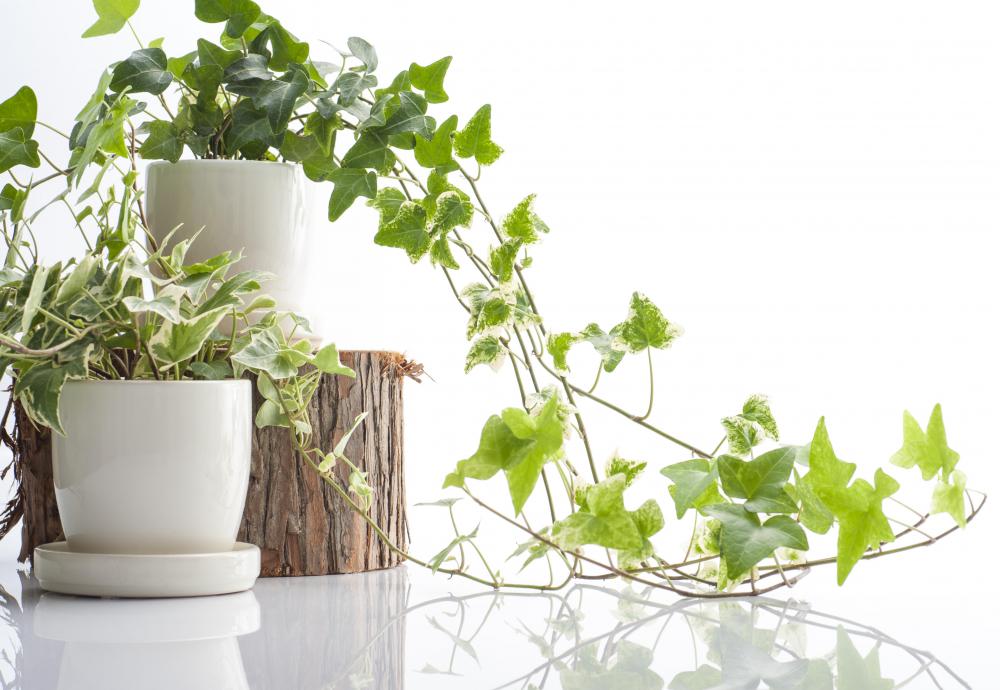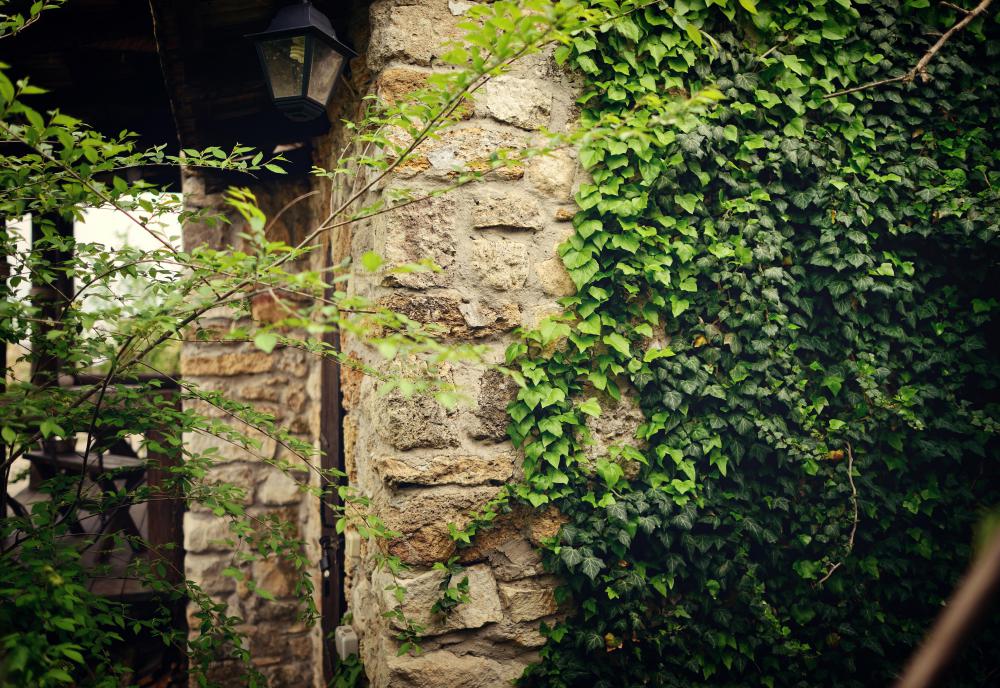At HomeQuestionsAnswered, we're committed to delivering accurate, trustworthy information. Our expert-authored content is rigorously fact-checked and sourced from credible authorities. Discover how we uphold the highest standards in providing you with reliable knowledge.
What is Ivy?
Ivy is an evergreen climbing vine in the genus Hedera. A number of vines within this genus are colloquially referred to as “ivies,” and some plants outside this genus are sometimes confusingly called “ivy” as well, perhaps most notably poison ivy. The plant has been cultivated for centuries as an ornamental, and some people find it quite attractive, although others have raised concerns about ivy, citing that it can become quite invasive, especially in areas where the plant lacks natural biological controls.
Several traits are common to the ivies, allowing people to easily identify them. These vines have very woody stems, periodically marked with adhering discs which put out roots, allowing ivy to grip its substrate. The plants also have palmately lobed leaves, which may be solid or variegated, depending on species and cultivar. They produce small umbels of green flowers that mature into berries in the fall and winter.

As an ornamental, ivy certainly has some advantages. It is very fast-growing, for one thing, and its evergreen nature ensures that it will act as a cover year-round. This is especially convenient when it is used to conceal ugly walls, as the plant can be coaxed into growing quickly, essentially causing the wall to disappear. Ivy is also extremely hardy, which can be an advantage in marginal climates, and it can act as an air scrubber, filtering toxins out of the air, which is very useful in urban areas.

However, ivy does have downsides. Outside of the Old World, where it is a native, the plant can compete with native species, and it frequently chokes out more slow-growing, delicate native plants. In North America especially, ivy has been known to smother trees, causing them to die and eventually fall in storms. The plant can also be hard on structures, as it tends to pull buildings apart with its extensive vine and root system.

If a gardener does not live in an area where ivy is native, he or she may want to think carefully before planting it. Native plant societies may be able to provide a list of alternatives that can be used in the same way in landscaping and design. People who have existing ivy plants don't need to rip them out, but they may want to keep an eye on it and control its growth where possible. In the case of a building overwhelmed by ivy, owners can contact an architect, who can determine whether or not the plant is damaging the building and take steps accordingly.
AS FEATURED ON:
AS FEATURED ON:















Discussion Comments
Something interesting
English ivy can also be used as an indoor plant, not only as part of natural decor, but also to make the air cleaner.
Post your comments